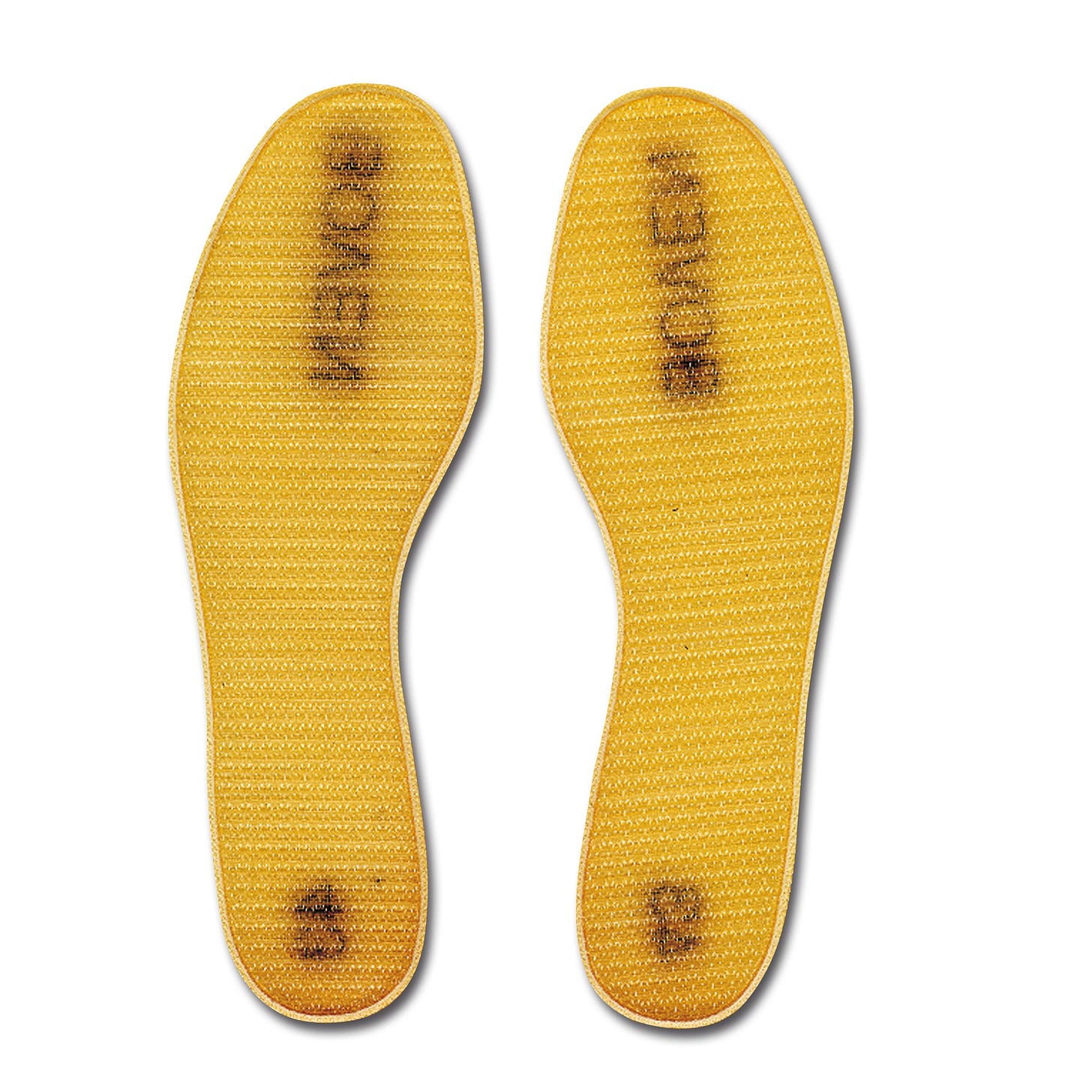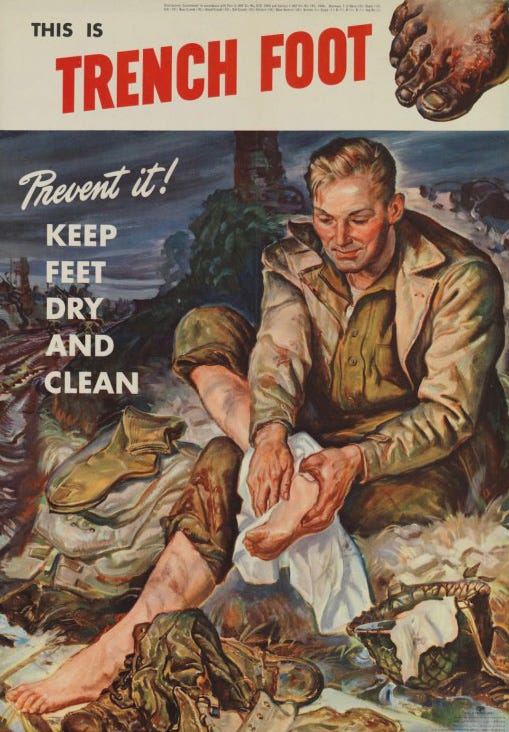Mesh Insoles
The mesh insole is a little-understood item of equipment or accessory, but one that can have a profound effect on your foot comfort in extreme conditions. Although people don't write history books about insoles, there is some history on the mesh insole, which sheds some light on their utility.
In 1942, the US army was developing equipment for jungle warfare against the Japanese in the Pacific, giving a great deal of attention to avoiding foot rot and trench foot in soldiers caused by wearing wet boots day after day.
The boots that resulted, such as the M-45 "Okinawa" jungle boot, were developed by switching from trying to stop water from getting into the boot but focused instead on letting the water out. This was achieved by using canvas panels and drain holes.
A major area of skin damage, from blisters, sores and tropic ulcers, was the soles of the feet, which were constantly in contact with the wet boot sole. Anyone who has done any walking on wet walking boots, or has sat in the bath too long, knows how your feet look. Now imagine having feet in that condition for days, weeks and months. Yes, good foot admin at night could help, cleaning and drying them, but such luxuries would be hard to achieve in long combat missions.
The obvious solution was to limit the contact between the foot and the boot sole and allow air to circulate with rotting, something that seemed an impossible ask.
Amazingly, what came to the rescue was cling film, or more specifically, Saran plastic, which had been discovered in 1933. By overlaying layers of Saran mesh and then compressing and heat bonding them into the shape of an insole, a very robust, rot-proof, and air-circulating insole could be created. This lowered the ‘water table’ in the boot, lifting the sole of the foot above the moisture, and greatly reducing foot rot.
The ability to reduce moisture under the sole was also an obvious advantage in cold weather as well, as moisture built up or ‘wetting out’ of the sole of a sock is a major cause of cold feet, especially in rubber or plastic boots (felt insoles work in the same way, but quickly compress, and are slow to dry, unlike plastic).
You can still find these insoles on Army surplus sites and eBay, and although of limited use to most outdoor users, they are well worth experimenting with if you suffer from damp socks and foot rot!





My father served in WWII, in the 10ths ‘ski troops’ but walked the length of Italy’s Po River Valley in the mud during the USArmy’s trek northward before they crushed the Nazi’s Gothic Line, Feb - April, 1945. As Christian Beckwith points out in his fine podcast NinetyPound Rucksack on the history and impact of the returning soldiers of the 10th, the ‘climbing troops’ moniker instead of ‘ski troops’ was really more appropriate. But as to foot care, my dad was relentless on the subject, teaching us to of course, change our socks before we camped for the night, remove and dry our insoles under our sleeping bags while we slept, etc. Today, I have further modified his well-taught vigilance to foot care by adding foot powder to foot skin before cold weather trips, using Merino Superfeet wool inner soles, plus even adding a foot warmer under the arch of the foot for added warmth on super cold days. At day’s end, my inner soles, removed from my boots or running shoes or whatever I have shod for the day, stand upright, perhaps at attention, saluting those that passed before us, dry warm feet and all.